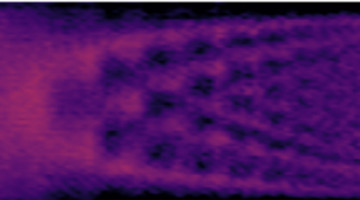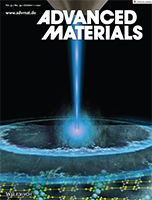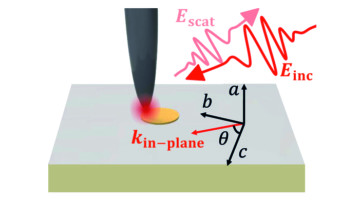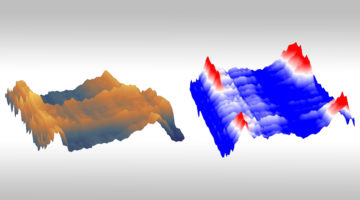Researchers found that ribbon-like thin films, grown through a bottom-up, self-assembly approach, can act as ultrahigh-quality nanoscale resonators of lattice vibrations at infrared frequencies. These ultrathin nanostructures are ideal platforms for applications that harness infrared light, such as thermal emission and molecular sensing. Read more »![]()
![]()
Laser-Induced Cooperative Transition in Molecular Electronic Crystal
The cooperative tuning of a supramolecular electronic crystal enables access to a long-lived hidden conducting phase with a broad temperature range. Researchers demonstrate a dynamic and cooperative phase in K-TCNQ, with the control of pulsed electromagnetic excitation. A dedicated charge–spin–lattice decoupling is required to activate and subsequently stabilize the non-equilibrium phase. Read more »
A Powerful Infrared Technique Broadens Its Horizons
Scattering-type scanning near-field optical microscopy (s-SNOM) focuses infrared light to dimensions below the diffraction limit, measuring properties with components perpendicular to the sample surface. Researchers have now devised a way to probe components parallel to the sample, where the technique has been less sensitive. Read more »
Hybridized Radial and Edge Coupled 3D Plasmon Modes in Self-Assembled Graphene Nanocylinders
The researchers report hybridized 3D plasmon modes stemming from 3D graphene nanostructures, resulting in non-surface-limited (volumetric) field enhancements and a four orders of magnitude stronger field at the openings of cylinders than in rectangular 2D graphene ribbons. Read more »
2020 Shirley Award to Honor Miquel Salmeron
By taking surface studies from ultrahigh vacuum to near-ambient pressure, Miquel Salmeron’s work at the ALS has had deep impact on a broad range of scientific questions, revealing the chemical, electronic, and mechanical properties of surfaces and interfaces on the nanometer (and often atomic) scale. Read more »
Infrared Nanospectroscopy at Graphene–Liquid Interfaces
Researchers developed a new infrared approach to probing the first few molecular layers of a liquid in contact with a graphene electrode under operating conditions. The work offers a new way to study the interfaces that are key to understanding batteries, corrosion, and other bio- and electrochemical phenomena. Read more »![]()
![]()
Expanding the Infrared Nanospectroscopy Window
An innovative infrared-light probe with nanoscale spatial resolution has been expanded to cover previously inaccessible far-infrared wavelengths. The ability to investigate heterogeneous materials at nanometer scales and far-infrared energies will benefit a wide range of fields, from condensed matter physics to biology. Read more »![]()
![]()






